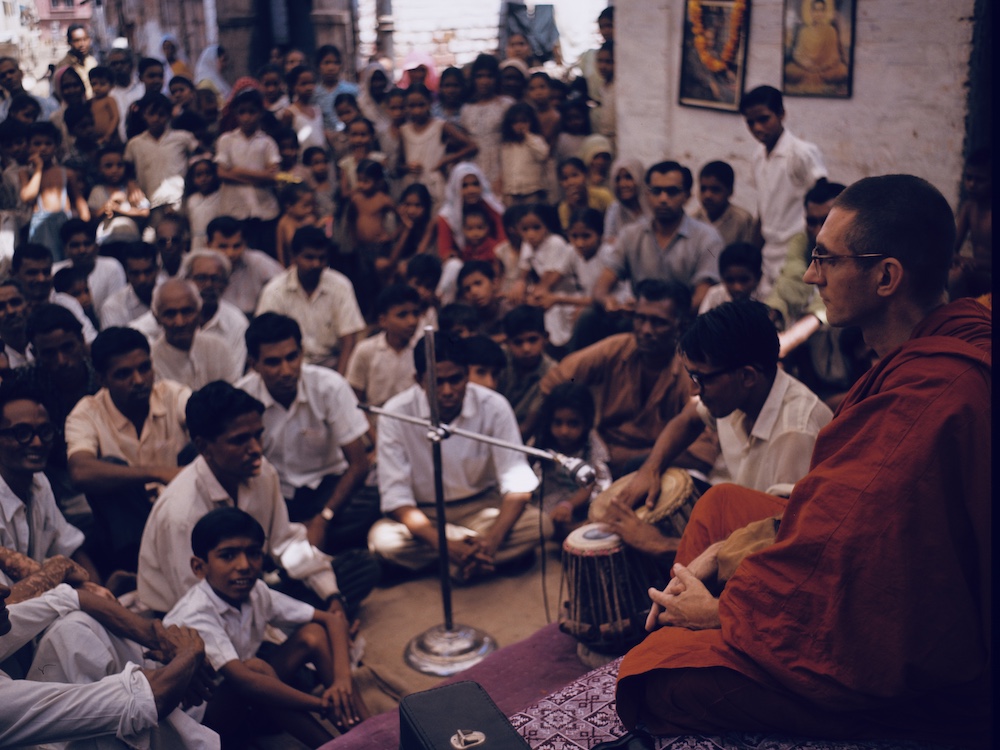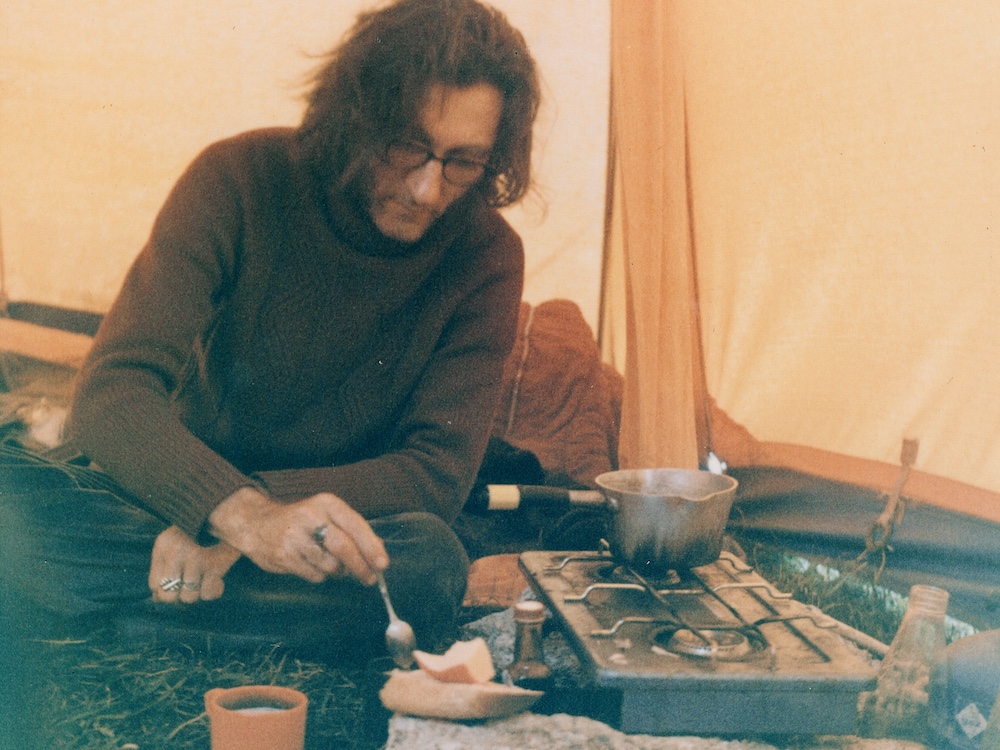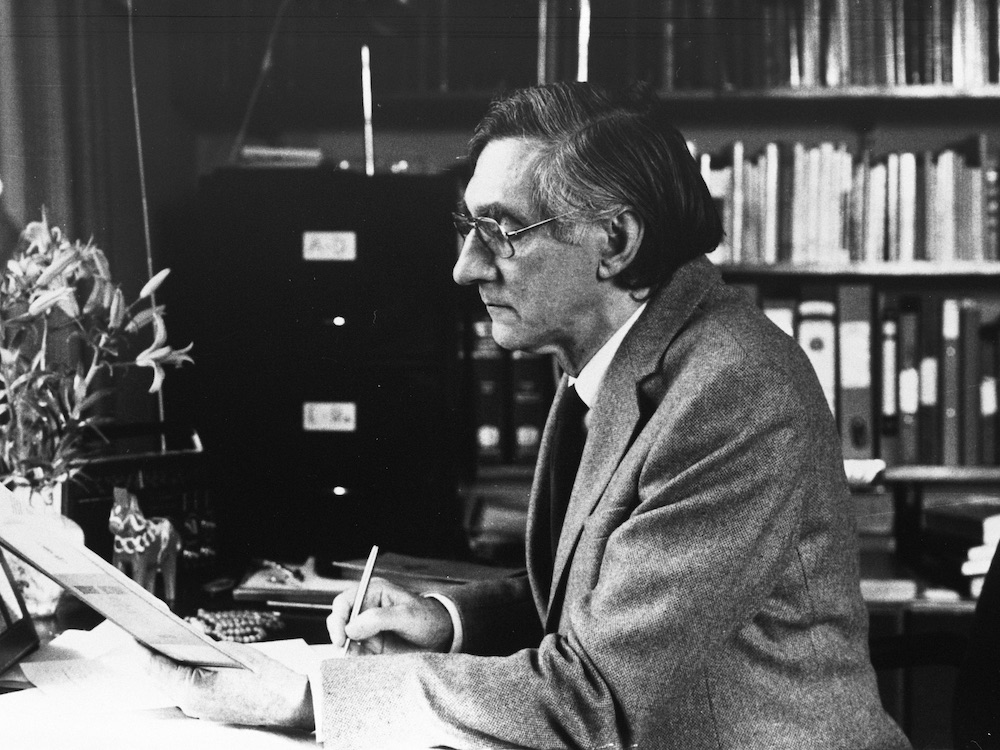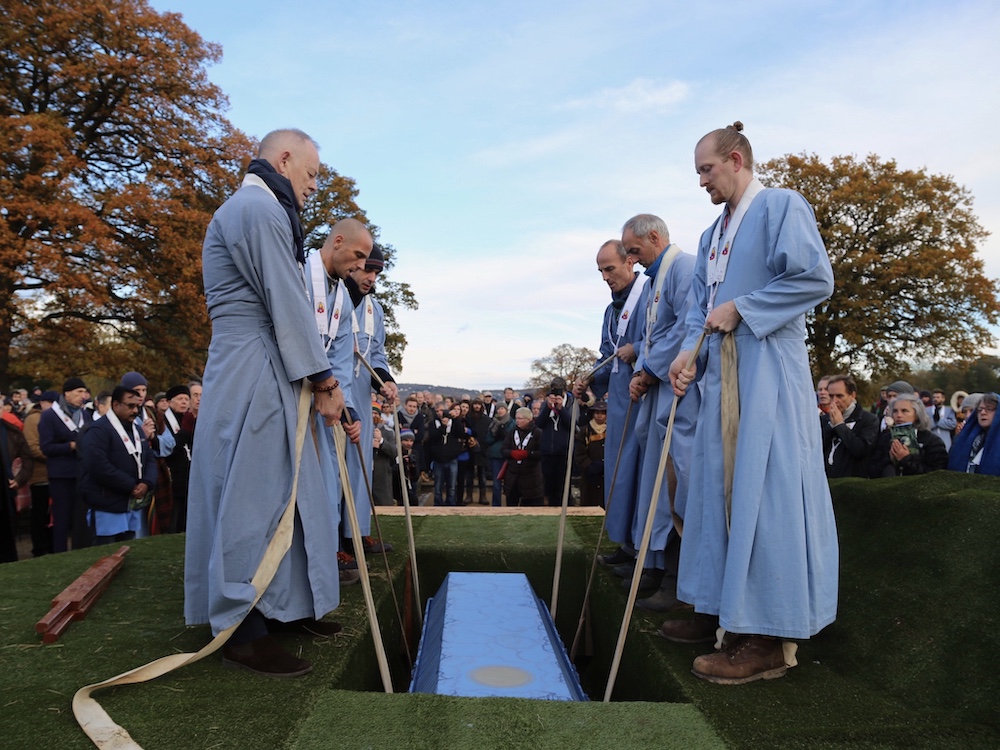SANGHARAKSHITA's PLACE IN TRIRATNA
In light of our criticisms of Sangharakshita’s sexual behaviour, what is his continuing role within Triratna? We explain here why we continue to regard him as Triratna’s central teacher and guide
In this report we fully acknowledge that some people experienced harm as a result of their contact with Sangharakshita and we understand that in the eyes of some observers this entirely negates his legitimacy as a Buddhist teacher. The members of the Adhisthana Kula take this perspective seriously and believe that the interests of Triratna as an organisation should never take precedence over the wellbeing and safety of people who engage with it. At the same time – and even taking account of the cognitive bias that inevitably comes from our commitment to Triratna – we also believe that in considering Sangharakshita as an individual, as a Dharma teacher and the central figure within Triratna we must include more than this.
As we say in the section on Sangharakshita’s Sexual Activity – it is clear to us that some of his sexual activity was unwise, and that in certain instances he acted unethically. In his 2016 Statement of Apology and Regret Sangharakshita recognised this himself and we feel it is important to state this clearly, without caveats that detract or excuse. We will continue to acknowledge openly what has happened in Triratna in the past and do our best to resolve any harm that has resulted.
However in reflecting on Sangharakshita’s role in Triratna’s future we need to take account of the various forms his influence has taken.
Most fundamentally, Sangharakshita’s place in Triratna stems from his role as its founder and guiding teacher
It is possible for members of Triratna to be an effective Buddhist community (or sangha) because we understand and practise the Dharma in shared ways that derive from Sangharakshita’s presentation of it. Becoming a member of the Order involves Going for Refuge to the Three Jewels in light of that presentation, and therefore the Order cannot exist apart from it.
By extension, Sangharakshita’s practice and understanding of the Dharma – his ‘Going for Refuge’ – underpins the Order as a whole, and he stands at the head of a lineage of practice and inspiration. The nature of this relationship was one of the topics that Sangharakshita himself discussed in his 2009 interview ‘What is the Western Buddhist Order?’ in which he spoke of Order members as being in a position of discipleship. He later revised this formulation by saying:
I know that there are Order members who also share and accept my understanding of Going for Refuge and the Dharma in the way I have described for whom the term ‘disciple’ implies an unrealistically intimate, uncritical, or reverential view of me. Therefore, taking account of such differences, I have come to think that no single term, including the term ‘disciple’, can adequately define all those who share my understanding of the Dharma and follow practices that flow from that understanding.
– A Note on ‘Disciple’: A Postscript to ‘What is the Western Buddhist Order?’
This important clarification deserves more attention than it has perhaps received, for example from the ordination teams, but whether or not individuals consider themselves disciples of Sangharakshita he remains, necessarily, a significant figure for everyone involved in Triratna.




Another aspect of Sangharakshita’s influence is his extensive body of writing and teaching
As we outline in the section on Unhelpful Attitudes and Ideas, we recognise that some of the ideas he shared contributed to the problems we have been examining. He made it clear that, while it is important that members of the sangha share a common understanding of the Path and the Goal of Dharma practice, this does not include ‘ideas’ concerning such matters as gender, sex and so on. This is relatively straightforward in principle, and in fact an important theme in Sangharakshita’s work is the need to distinguish central elements of the Dharma from particular ideas about its application. But in practice, considerable maturity is required to be – on the one hand – engaged with a teacher, committed to practising their teachings and immersed in the culture of a particular movement, and – on the other – to stand back from those things and make these important distinctions.
Taken in the round, we believe that Sangharakshita’s presentation of the Dharma is both true to the central teachings of the Buddhist tradition and innovative in important ways. We find great depth and richness in the teachings and believe they make a distinctive contribution to Buddhism in the modern world. We know that they have been a source of inspiration and a doorway into effective practice of the Dharma for thousands of people, and while recognising past difficulties and mistakes, we also want to honour that experience.
The legacy of Sangharakshita’s personal connection with others is also mixed
Most of those who knew Sangharakshita as students, disciples or friends remember him as a deeply intelligent and sensitive man with an insight into the Dharma that supported their own deepening experience. Spending time with visitors and responding to letters were important parts of his life over several decades and many of the people he engaged with in this way recall his kindness, encouragement, and perceptiveness. For most of those who knew Sangharakshita, the depth of his Dharma practice was very evident and the challenge is to understand how this coexisted with any problematic elements of his behaviour.
For this reason, we do not recognise the overwhelmingly negative account of Sangharakshita’s character that has featured in some recent media accounts, which reduce his character to certain ethical failings. For many Order members, Sangharakshita’s failings in his sexual behaviour are relatively minor matters when set against his achievements and virtues, and they are happy to consider themselves his wholehearted disciples.
However, we also recognise that for some people, especially where sexual contact was involved, their connection with Sangharakshita caused considerable confusion and suffering. Additionally, many who were not personally involved in these events have been troubled by his behaviour and this has disrupted and sometimes ended their relationship with both the Dharma and the Triratna Community.
Although some Order members tell us that they did attempt, individually, to discuss these matters of sexual ethics with Sangharakshita, for many years he did not acknowledge that he had acted wrongly. He left it very late in his life to express his regret for having ‘hurt, harmed or upset’ people through his actions before he finally did so in 2016, and the considerable delay compounded the problem his initial actions had caused. He was also open to engaging in Restorative Process (mediated by an external specialist) with any of those with whom he had had sexual relations who wanted this.
Finally, in founding Triratna Sangharakshita brought into being a community with a life of its own
He encouraged people to make the Dharma their own, understanding the principles of Dharma practice and allowing space for the many ways these can be put into effect. He set up autonomous structures that were connected by bonds of friendship and shared commitment, rather than controlled centrally. He handed on responsibilities such as conducting ordinations many years before his death and let others know that they had his confidence. And he encouraged people in Triratna to act ethically and to develop an ethical sensibility that would inform our lives.
The result is that Triratna today, as we experience it, is an effective Sangha, or spiritual community, in which the Dharma is alive in the practice of individuals and in the connections between us. We recognise that not everyone experiences Triratna in this way, and we recognise that it has many limitations and some problems, but our experience is that most people with extended experience of Triratna recognise this characterisation. We do not think this would have come about without Sangharaksihta’s inspiration and guidance.
One irony of the current situation is that the understanding of ethics that we have learned, ultimately, from Sangharakshita has informed the criticisms of him that we make in this report.
Taken together, these points show the complexity of Sangharakshita’s place in Triratna, and it is likely to remain so in years to come. We believe it is important to recognise that complexity, neither dismissing the problems nor reducing the relationship to them. Triratna’s future will be worked out in relation to Sangharakshita, in all his complexity and his mixed impact on others. Beside his limitations, flaws, errors and the harm experienced by some we set the inspiration, brilliance and depth of his teachings; the memory of his kindness and friendship; and his legacy as a founder.
